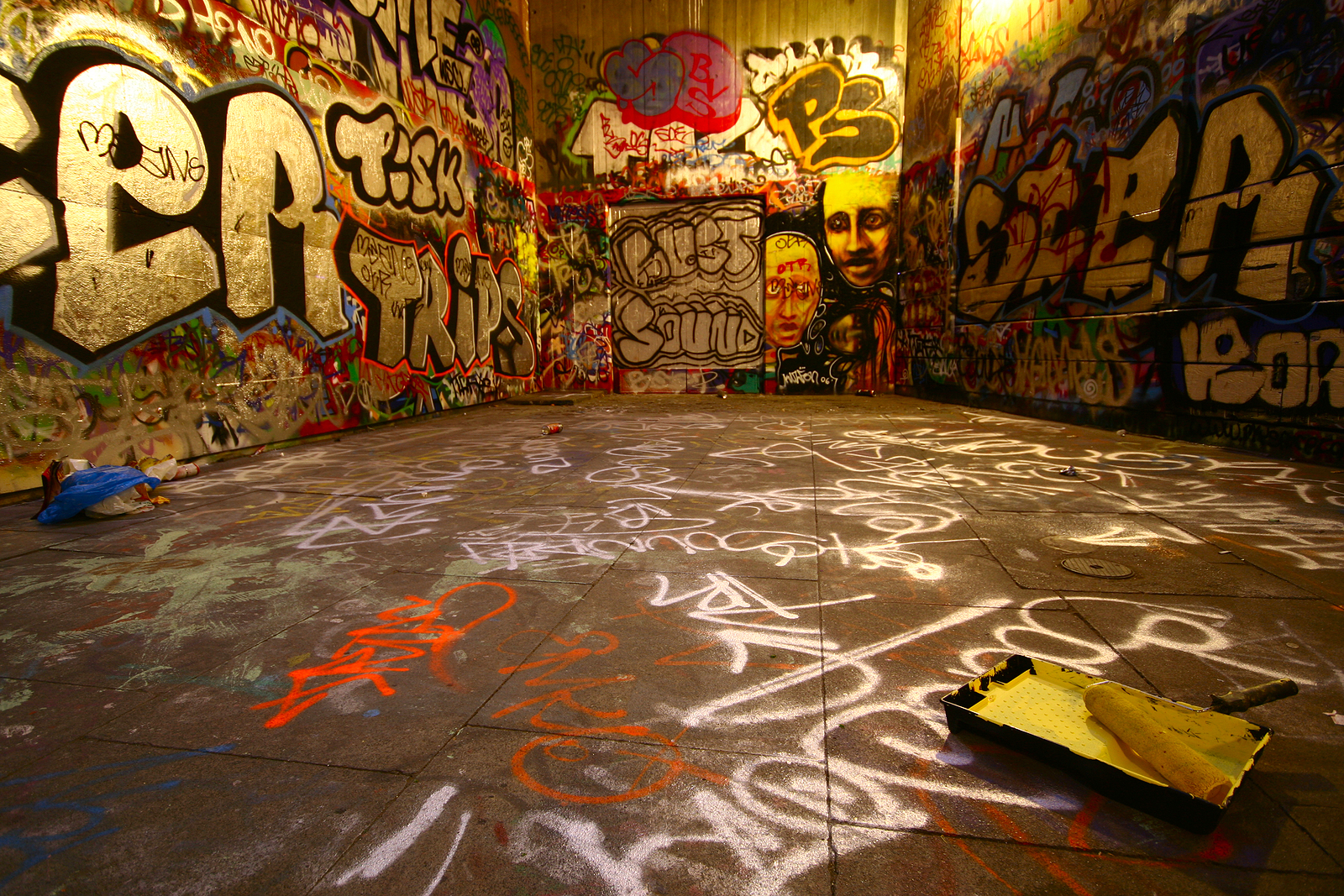Is graffiti art or vandalism? Let’s explore the issue and attempt to understand where it stems from.
Is graffiti art or vandalism? Getting to the root of the problem
The first examples of graffiti in its modern form appeared in the 1960s. Tagging, an act of writing your name or initials in public places, was a popular practice among gang members and was less of a form of self-expression and more of a way to mark territory. Understandably, the association with gang activity greatly contributed to a very specific image of graffiti in the public eye.
In the 1970s, tagging stopped being so closely associated with gangs but still was frowned upon by authorities, as it was seen as an act of vandalism of public and private property. Since then, many established artists, who first started as taggers and street artists, transitioned into gallery spaces. One of the most famous examples of such artists was Basquiat, who used to paint train cars in New York under the artist name SAMO. However, many artists who started in graffiti continue working in the medium even today. There are also those who have drastically changed their opinions on graffiti. For example, Cornbread, the legendary street artist who is often credited with the popularization of tagging in the 1960s, joined the Anti-Graffiti Network in 1984 to prevent young people, who found themselves in difficult situations, from tagging and joining criminal groups.
The thin line between vandalism and art
What is and isn’t considered art — just like what is and isn’t considered legal — is often dictated by the people in the position of power. While graffiti can cause harm when done on private property without permission, it is not as clear-cut as it seems. Chances are, those mostly against graffiti would be happy to see a piece by Banksy appear on their building’s wall. Many believe that Banksy’s million-dollar work has become a synonym for commercial art. Just like murals and most state-commissioned street art, it faces critique from those who believe that graffiti is supposed to be illegal and remains a form of protest.
So, is graffiti art or vandalism? The answer to this question is that graffiti can be art, but it can also be vandalism if done unauthorized. It seems, however, that the discussion of the validity of graffiti as an art form goes way beyond legislation and is often rooted in prejudice and social inequality.

